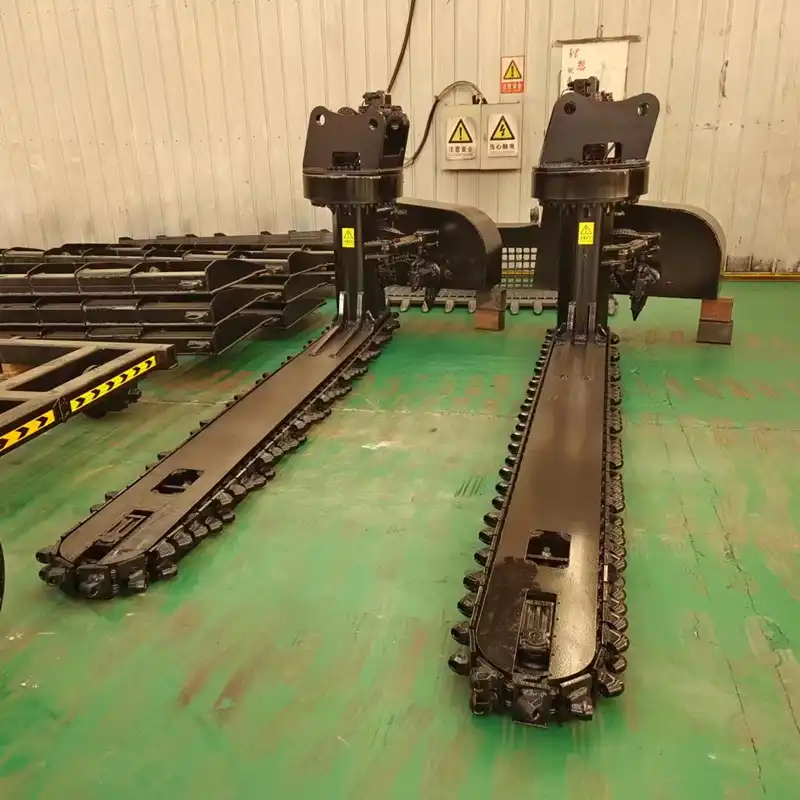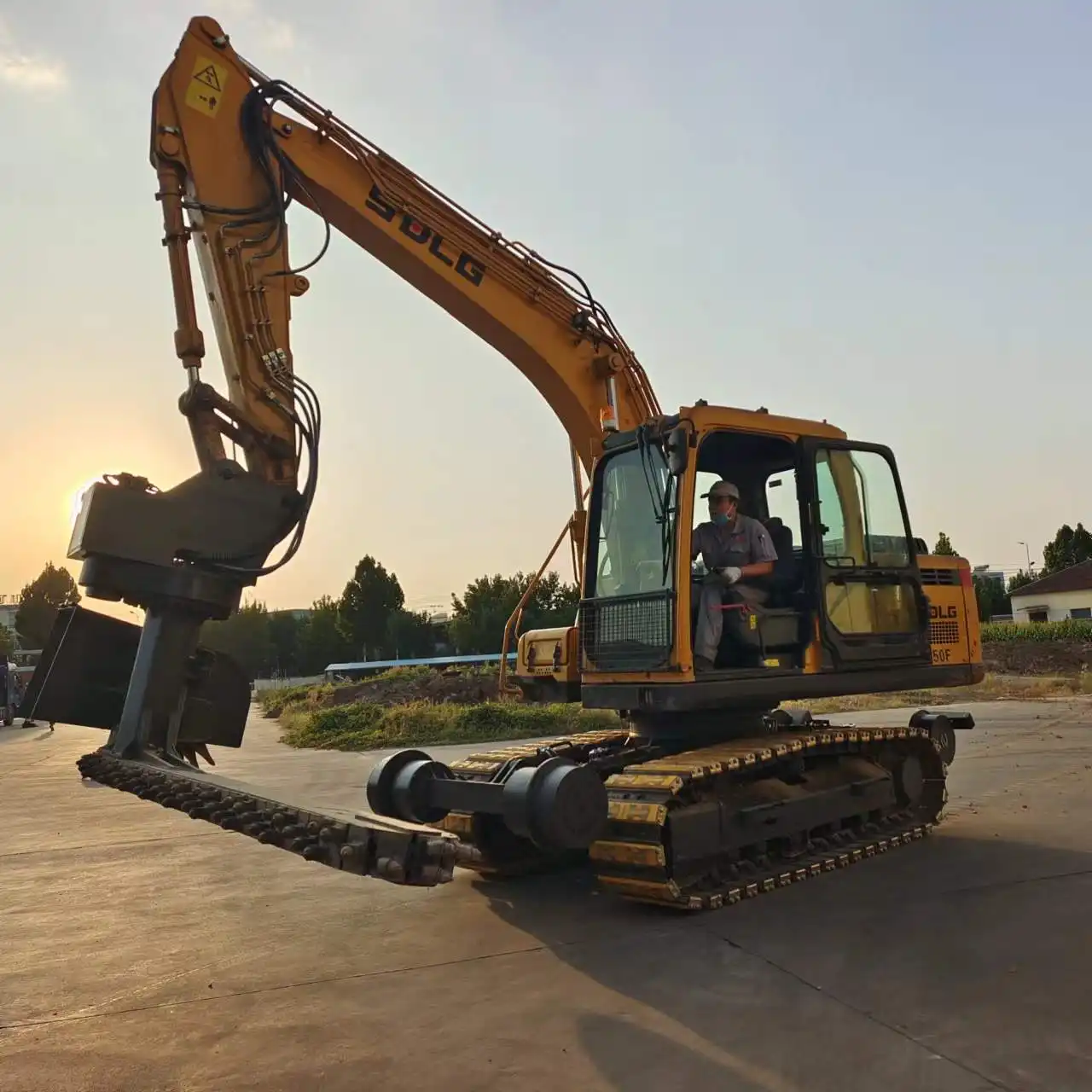Can a rail-road excavator undercutter be used without removing the rail line?
The answer is a resounding yes! Modern rail-road ballast undercutter excavators are specifically engineered to perform ballast maintenance operations while keeping the rail line intact. These specialized machines revolutionize track maintenance by allowing operators to remove fouled ballast, mud, and debris from beneath active railway tracks without the costly and time-consuming process of rail removal. Railway maintenance teams can now address ballast contamination issues efficiently, maintaining track stability and safety standards while trains continue operating on adjacent tracks. This innovative approach transforms traditional maintenance schedules, enabling continuous operations and significantly reducing project timelines. The undercutter's precision engineering allows it to work beneath the rail structure, extracting contaminated materials while preserving the track's geometric integrity. This capability proves invaluable for railway operators managing busy corridors where extended shutdowns would disrupt freight and passenger services, making ballast maintenance more practical and economically viable than ever before.

Minimizes Track Downtime
Continuous Operation Advantages
Railway networks worldwide face immense pressure to maintain service reliability while conducting essential maintenance activities. Traditional ballast renewal methods require complete track closures, often lasting several days or weeks, causing significant disruptions to freight and passenger services. However, rail-road ballast undercutter excavators change this paradigm entirely. These machines operate alongside active tracks, allowing maintenance crews to address ballast contamination issues while adjacent tracks remain operational. The undercutter's specialized design permits precise material removal without compromising track structure, enabling railway operators to maintain service schedules while addressing critical maintenance needs.
Scheduled Maintenance Efficiency
The efficiency gains from using undercutter technology extend far beyond simple time savings. Railway maintenance windows, traditionally measured in days, shrink to hours when utilizing these specialized machines. Maintenance teams can schedule ballast cleaning operations during standard work windows, eliminating the need for extended track possessions. This scheduling flexibility allows railways to address maintenance needs proactively rather than reactively, preventing minor ballast contamination from developing into major track geometry problems. The ability to maintain tracks without service interruption represents a fundamental shift in railway maintenance philosophy, moving from disruptive intervention to seamless preservation.
Cost-Effective Maintenance Solutions
Economic considerations play a crucial role in railway maintenance decisions, and undercutter technology delivers substantial cost benefits. Eliminating extended track closures means avoiding the significant costs associated with service diversions, passenger compensation, and freight delays. Railway operators can redirect resources previously allocated to managing service disruptions toward productive maintenance activities. The undercutter's ability to address ballast issues before they necessitate complete track renewal translates into long-term cost savings. Furthermore, the reduced labor requirements and shortened project timelines make ballast maintenance more economically attractive, enabling more frequent interventions that maintain optimal track conditions.
Maintains Track Alignment
Precision Ballast Removal
Track alignment represents one of the most critical factors in railway safety and operational efficiency. Traditional ballast removal methods often disturb track geometry, requiring extensive re-alignment and tamping operations. Rail-road ballast undercutter excavators address this challenge through precision-engineered removal systems that extract contaminated material while preserving track position. The undercutter's controlled cutting action removes fouled ballast from beneath the sleepers without lifting or disturbing the track structure. This precision approach maintains the existing track geometry, eliminating the need for extensive re-alignment work and ensuring that trains can resume normal operations immediately following maintenance activities.
Geometric Stability Preservation
Railway track geometry depends on consistent ballast support beneath each sleeper, and any disruption to this support can create alignment issues. Undercutter technology addresses this concern by removing contaminated material while simultaneously replacing it with clean ballast. The machine's sophisticated hydraulic systems control the cutting depth and width, ensuring uniform material removal across the maintenance area. This controlled process maintains the ballast bed's structural integrity, preserving the track's geometric stability. The result is a maintenance operation that improves ballast conditions without compromising the precision alignment required for safe train operations.
Quality Assurance Integration
Modern undercutter systems incorporate advanced monitoring and control technologies that ensure consistent maintenance quality. Operators can precisely control cutting parameters, including depth, width, and material removal rate, through sophisticated hydraulic systems. These controls enable maintenance teams to address specific ballast contamination patterns while maintaining uniform track support. The machine's ability to work systematically along the track ensures consistent results across the entire maintenance area. This systematic approach to ballast maintenance creates predictable outcomes, allowing railway operators to plan maintenance activities with confidence in the results.

Supports On-Track Mobility
Hi-Rail Capability Integration
The integration of undercutter technology with hi-rail excavators represents a significant advancement in railway maintenance efficiency. These dual-mode machines can travel on both roads and railways, providing unprecedented access to remote track locations. Rail-road ballast undercutter excavators equipped with hi-rail capability can reach maintenance sites up to 40 miles from the nearest road crossing, eliminating the need for dedicated transport equipment. This mobility enables maintenance crews to address ballast issues in remote locations that were previously difficult or expensive to reach. The ability to move on and off the track without dedicated crossings maximizes operational flexibility and reduces the logistical complexity of maintenance operations.
Operational Flexibility Enhancement
The mobility features of modern undercutter systems extend beyond simple transportation capabilities. These machines can operate from either side of the track, providing operational flexibility that adapts to various site conditions. The undercutter's ability to work around obstacles, curves, and track infrastructure makes it suitable for diverse maintenance scenarios. This adaptability proves particularly valuable in urban environments where space constraints limit traditional maintenance approaches. The machine's compact design and precise control systems enable effective ballast maintenance in challenging locations, expanding the scope of achievable maintenance activities.
Remote Location Accessibility
Railway networks often include remote sections where traditional maintenance approaches prove logistically challenging and expensive. Undercutter technology addresses these challenges by providing self-contained maintenance capabilities that can operate independently in remote locations. The machine's integrated systems eliminate the need for extensive support equipment, reducing the logistical footprint of maintenance operations. This independence enables railway operators to maintain consistent track conditions across their entire network, regardless of location accessibility. The ability to address ballast issues proactively in remote areas prevents minor problems from developing into major maintenance emergencies that could require extensive resources to resolve.
FAQ
How deep can undercutter excavators work beneath rails?
Modern undercutter systems can effectively remove ballast to depths of up to 800mm beneath the rail line, providing comprehensive cleaning capabilities that address deep-seated contamination issues.
What types of contaminated materials can undercutters remove?
Undercutter excavators efficiently remove various contaminants including mud, fine particles, vegetation, and deteriorated ballast materials that compromise track stability and drainage.
Can undercutters work on different rail gauges?
Yes, rail-road ballast undercutter excavators can be configured for different rail gauges, including standard 1435mm gauge and custom configurations to match specific railway requirements.
How fast can undercutter maintenance operations proceed?
Working speeds typically range from 0.5 to 1.2 km/h, adjustable based on ballast conditions and maintenance requirements, allowing for efficient yet thorough cleaning operations.
Are undercutters compatible with existing excavator fleets?
Most undercutter systems are designed for compatibility with various excavator models, offering customizable mounting options that integrate with existing equipment fleets.
Transform Your Railway Maintenance Operations Today
Tiannuo's advanced rail-road ballast undercutter excavators deliver the precision, efficiency, and reliability your railway maintenance operations demand. Our customizable undercutter systems feature cutting-edge technology with undercutting depths up to 800mm and working widths from 500mm to 1200mm. Whether you need manual or automatic control systems, our solutions adapt to your specific requirements. Built with high-strength steel and wear-resistant alloys, these machines provide lasting performance in demanding railway environments. With OEM support available and full compatibility with various rail gauges, Tiannuo's undercutter technology represents the future of efficient railway maintenance. Don't let ballast contamination compromise your track performance – discover how our innovative solutions can revolutionize your maintenance operations while keeping your rails operational. Contact our technical team today to learn more about implementing this game-changing technology in your railway network.
Ready to enhance your railway maintenance capabilities? Contact us at rich@stnd-machinery.com to discuss your specific requirements and discover how Tiannuo's ballast undercutter excavators can transform your maintenance operations.
References
- Railway Engineering International: "Advanced Ballast Maintenance Technologies in Modern Railway Operations" (2024)
- International Railway Journal: "Undercutter Technology Applications in Track Maintenance" (2023)
- Railway Track & Structures: "Innovative Solutions for Ballast Contamination Management" (2024)
- Journal of Railway Engineering: "Track Geometry Preservation During Ballast Maintenance Operations" (2023)
- Railway Maintenance Engineering Quarterly: "Hi-Rail Equipment Integration in Contemporary Track Maintenance" (2024)
About Author: Arm
Arm is a leading expert in the field of specialized construction and railway maintenance equipment, working at Tiannuo Company.

